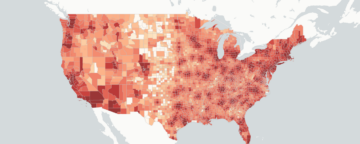The way that the vaccine for human papillomavirus is described can affect whether women decide to seek vaccination, according to a study by researchers at the Center of Excellence in Cancer Communication Research of the University of Pennsylvania’s Annenberg School for Communication.
The research was presented in Boston at the American Association for Cancer Research’s 5th Annual International Conference on Frontiers in Cancer Prevention Research.
In June, the Food and Drug Administration approved a vaccine to prevent HPV, the most common sexually transmitted infection in the United States and the leading cause of cervical cancer. The vaccine was approved for females as young as 9. Its success in disease prevention depends largely on parents’ and individuals’ willingness to request the vaccine.
A representative sample of 635 American adults, of whom 49 percent were women, was randomly assigned to read one of three slightly different paragraphs about the vaccine as part of the Annenberg National Health Communication Survey.
One paragraph addressed how the vaccine protects against cervical cancer, another how the vaccine protects against cervical cancer and sexually transmitted infection and the third how the vaccine protects against cervical cancer, sexually transmitted infection and that it may or may not lead to increased sexual promiscuity among those vaccinated.
The survey was administered to determine the participants’ intentions regarding vaccination.
When women in the survey read that the vaccine protects only against cervical cancer, 63 percent indicated that they were “very likely” or “somewhat likely” to get the vaccine compared to 43 percent of women who read that the vaccine protects against cervical cancer and a sexually transmitted infection.
“Despite high levels of exposure to and awareness of the newly approved HPV vaccine, intentions to vaccinate are mixed,” said Amy Leader, research director of the Center. “Trends indicate that intentions are highest when the vaccine is framed to solely prevent cervical cancer. Intentions are lowest when the vaccine is framed to prevent both cervical cancer and a sexually transmitted infection indicating that people may feel the need for an STI vaccine is personally unnecessary.”
“The Annenberg National Health Communication Survey makes it possible for us to be responsive to fast-breaking developments in health care and health care policy. The survey gives an ongoing monthly picture of the public’s health communication practices,” said Joseph Cappella, a professor in Penn’s Annenberg School. “It also allows us to assess the public’s responses to health innovations, including how different ways of communicating about them will bias their reactions.”
The National Health Communication Survey is made possible through support from the Annenberg Foundation Trust at Sunnylands and the Annenberg School for Communication at Penn.


